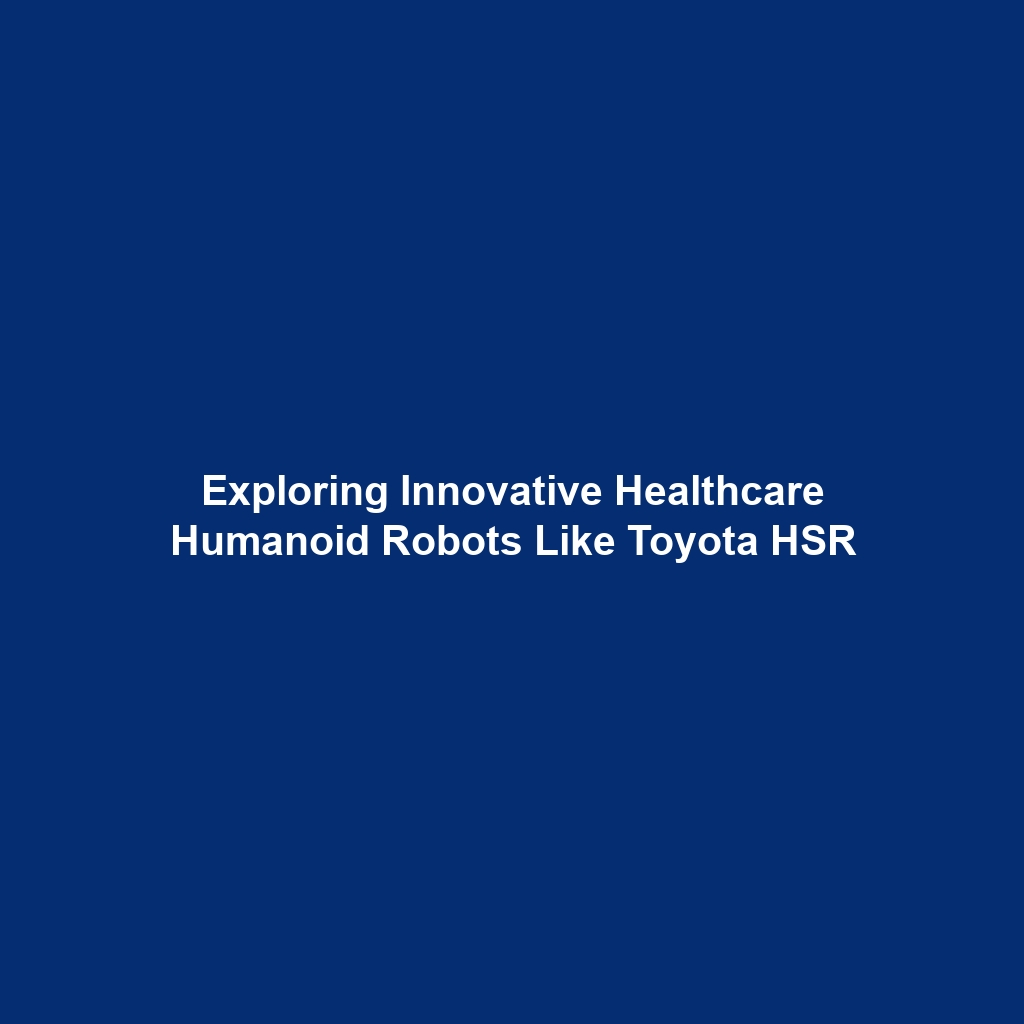Examples like the Toyota HSR (Human Support Robot) Used in Healthcare Settings
Introduction
The integration of humanoid robots in healthcare settings is revolutionizing patient care, with the Toyota HSR (Human Support Robot) serving as a prominent example. Designed to assist healthcare professionals, the HSR effectively enhances the quality of care for patients through its advanced functionalities. As humanoid robotics continues to evolve, understanding the applications and significance of robots like the Toyota HSR becomes crucial in both medical and technological landscapes. This article will delve into major concepts, applications, challenges, and future research surrounding this innovative robotic technology.
Key Concepts
The Toyota HSR is a prime example of how humanoid robots can serve practical roles in healthcare. Key concepts associated with this technology include:
- Assistive Robotics: Robots developed to aid human tasks, focusing on enhancing mobility and comfort for patients.
- Human-Robot Interaction: The seamless interaction between humans and robots, ensuring that robots like the HSR can understand and respond to human needs efficiently.
- AI Integration: Use of artificial intelligence to optimize the capabilities of humanoid robots for personalized patient care.
Applications and Real-World Uses
The practical uses of the Toyota HSR in healthcare settings exemplify the impact of humanoid robots. Here are significant applications:
- Patient Assistance: The HSR can assist with simple tasks such as delivery of medications or patient supplies, helping healthcare staff focus on more critical responsibilities.
- Mobility Support: By guiding patients during rehabilitation or physical therapy sessions, these robots enhance the recovery experience.
- Social Interaction: Humanoid robots can provide companionship to patients, especially in settings like nursing homes, which can improve mental well-being.
These applications demonstrate how the Toyota HSR aids in streamlining operations and enhancing patient care within the category of humanoid robots.
Current Challenges
Despite the promising potentials, there are several challenges associated with the deployment of the Toyota HSR and other humanoid robots in healthcare:
- Cost of Implementation: The high initial cost of humanoid robots can be a barrier for many healthcare facilities.
- Technology Acceptance: Resistance from healthcare professionals and patients regarding robot interaction and reliance.
- Ethical Concerns: Issues related to patient privacy and the ethics of robot-human interaction may arise.
Future Research and Innovations
Looking ahead, research focused on humanoid robots like the Toyota HSR is vital for enhancing their efficacy and acceptance in healthcare. Anticipated innovations include:
- Advanced AI Algorithms: Developing smarter algorithms that enable more intuitive and effective patient interactions.
- Improved Mobility Features: Innovations that facilitate smoother and more natural movements to better assist patients.
- Enhanced Learning Capabilities: Future robots may learn from their environment and adapt to specific patient needs over time.
Conclusion
In conclusion, the Toyota HSR (Human Support Robot) is a fundamental example of how humanoid robots can transform healthcare settings by enhancing patient care and streamlining administrative tasks. Despite facing challenges, ongoing research and technological advancements continue to pave the way for improved functionalities and wider acceptance. For those interested in the future of humanoid robots in healthcare, keeping an eye on emerging innovations is crucial. For more insights on robotics in healthcare, visit our articles on robotics in healthcare applications and the future of healthcare robotics.
